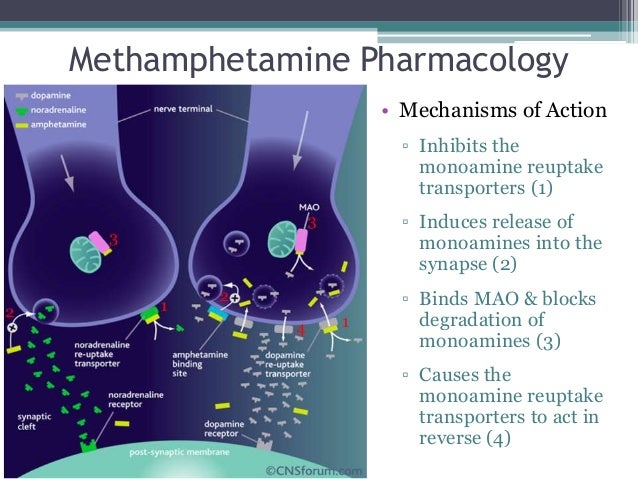

Long-term use is also associated with physical side effects, including damage to the respiratory and cardiovascular systems. Meth can also impact cognitive function. This disorder is characterized by visual hallucinations, paranoid delusions, and a strong sense of panic, dread, or other negative emotions.

This is a disorder that can occur with the misuse of any stimulant, but meth is a common cause. In the long term, using meth can lead to the onset of stimulant-induced psychosis. Repeated use of meth leads to continued, but decreasing effects, which in turn leads a person to crave more of the drug. The sudden rush of misusing meth, along with its short-lived effects, leads many people to take more and more of the drug to prolong its effects. This is most often the case when a person snorts or smokes meth, as that causes the drug to be delivered to the central nervous system very quickly and in higher potency. The interaction with neurotransmitters also causes meth to induce some short-lived psychoactive effects. By increasing the amount of these neurotransmitters in the brain, meth induces a feeling of euphoria. Meth is also believed to interact with serotonin, another neurotransmitter. The primary impact of meth is a massive increase in dopamine and norepinephrine, which are types of neurotransmitters. In any case, meth is considered a powerful stimulant 3 and it has a direct impact on the central nervous system. Street methamphetamine poses a higher risk than prescription methamphetamine for these reasons, as the varying manufacturing practices means that the purity and potency can vary widely. It can also be made in other countries and imported into the United States illegally. One thing that makes meth so dangerous is that it’s often manufactured in illegal home-based labs. The chemical makeup of methamphetamine is N-methyl-1-phenylpropan-2-amine 2. Meanwhile, Schedule I drugs are considered very risky and have no accepted medicinal applications, meaning not even a doctor can prescribe them. Schedule II drugs present high risks, but there are also accepted medicinal applications for the drug in prescription form. The reason methamphetamine is more powerful is that it can penetrate the blood-brain barrier more quickly than amphetamines do.īecause of its high risk of misuse and dependence, methamphetamine is classified as a Schedule II drug by the Drug Enforcement Agency (DEA). The effects of methamphetamine are also stronger than that of amphetamines. The primary difference between amphetamines and methamphetamine is that methamphetamine lasts longer. However, methamphetamine was not used very widely until the Second World War when those in the military used it and other amphetamine-type stimulants (APS) to help suppress appetite, increase energy, and reduce fatigue while in service.

Japan was the first country to take amphetamine and manufacture methamphetamine in 1919. Since then, amphetamines have been used in the treatment of colds, asthma, and allergies because they function as a decongestant. However, amphetamines weren’t used clinically until researchers in the United States re-synthesized them in the 1920s. Amphetamine is a synthetic drug created in 1887 by researchers at the University of Berlin. The parent drug of methamphetamine is amphetamine.
AMPHETAMINE PSYCHOSIS HOW TO
How to Help Someone with Meth Psychosis.


 0 kommentar(er)
0 kommentar(er)
